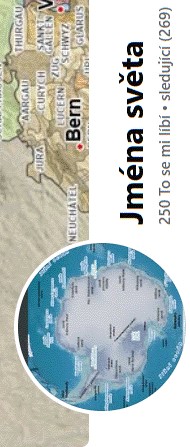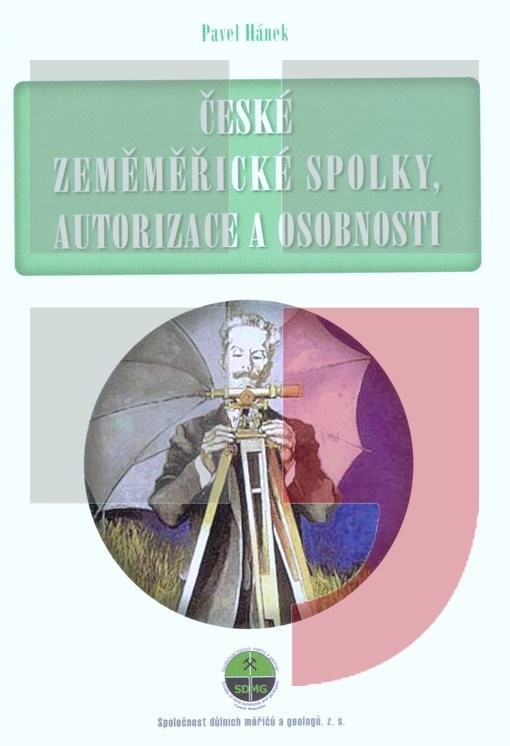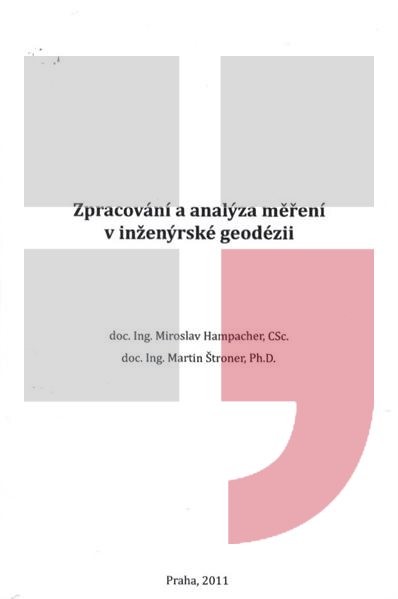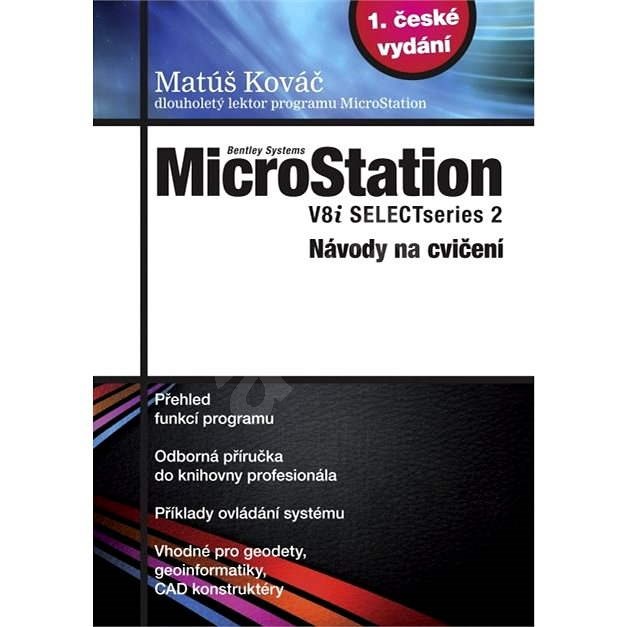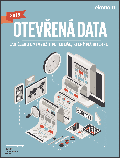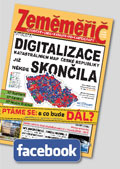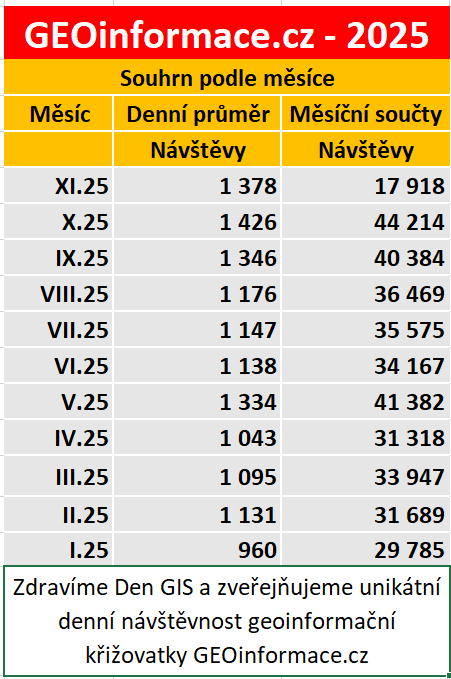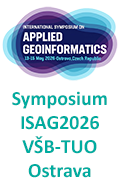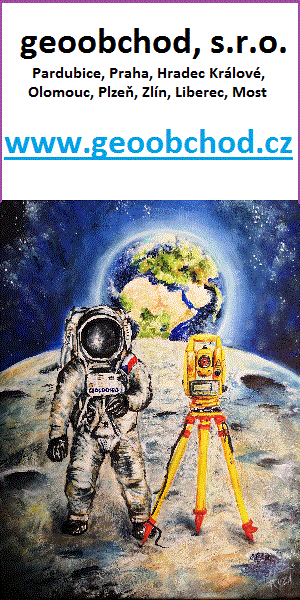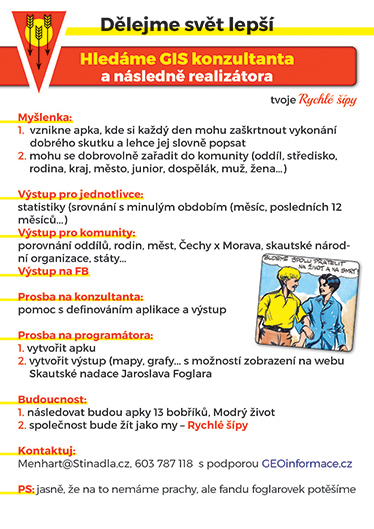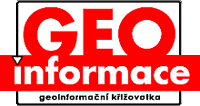zprávy
zdroje zpráv:Družice Proba-1 ustanovila nový rekord
12.3.2018 9:26 Český Kosmický PortálPůvodně byla navržena jako dvouletá mise a vypuštěna 22. října 2001. Řeč je o družici Proba-1, která je stále plně funkční a poskytuje velmi hodnotná hyperspektrální data.
End users the ultimate winners in the Golden Age of GNSS
12.3.2018 9:03 European GNSS Agency
The Munich Satellite Navigation Summit opened on March 5 with a discussion about who stands to win from competition and cooperation in satellite navigation. After a lively debate it was decided that, ultimately, the end user will be the winner in what one panellist described as ‘the Golden Age of GNSS.’
Matthias Petschke, Director of EU Satellite Navigation Programmes, European Commission, opened the discussion by stressing that a balanced mix between competition and cooperation is needed in the satellite navigation sector. He said that competition between providers of GNSS services and between industrial players would lead to better services, more innovation and reduced costs. “On the other hand, cooperation will ensure compatibility of signals in terms of radio frequency characteristics and interoperability of systems – allowing multi-constellation to provide better services,” he said.
European GNSS Agency (GSA) Executive Director Carlo des Dorides agreed. He said that cooperation is necessary – and frequency coordination is only one example of this. The GSA director noted that, from a user perspective, GNSS systems provide the best performance when they work together. “Today more than 60% of the chipsets available on the market are multi-system and more than 20% foresee four-satellite-system compatibility. The market is requesting more reliable, more accurate positioning, and this is what multi-system provides,” he said, adding that within multi-constellation solutions Galileo has a special place thanks to its frequency compatibility with GPS.
Galileo outperforming expectations
Noting that navigation information had become an integral part of our daily lives, Simon Plum, Managing Director for the Galileo Programme at DLR GfR, said that priorities have started to shift from the deployment of infrastructure to service delivery on a global scale. “Europe has proven its capability over the past number of years, and now the system has to grow its reputation of precision and, more importantly, of reliability,” he said.
In this regard, Petschke stressed that Galileo is already delivering much better services than expected and, what’s more, it is transparent about its performance, with quarterly performance reports published on the GSC website. “The market uptake results are impressive, preliminary figures show that some 75 million Galileo-enabled smartphones were sold last year and 95% of the chipsets on the market are already Galileo-enabled. What’s more, as of April 1 this year, all new passenger cars in the EU will be equipped with the eCall rapid assistance systems, which are enhanced by Galileo,” he said.
Read this: GSA publishes eCall guidelines to facilitate GNSS compatibility tests
User-driven
Carlo des Dorides said that the GSA is focusing on ensuring that the current generation of Galileo services, as well as the second generation, are driven by user needs. He said that Galileo will soon offer two unique differentiators that other GNSS are not currently providing: the Open Service Navigation Message Authentication (OS NMA) and worldwide Precise Point Positioning (PPP). “The new services will meet emerging needs, especially in autonomous applications,” he said.
Go Takizawa, Executive Director of QZSS Strategy at the National Space Policy Secretariat in Japan noted that by 2020 there would be more than 100 positioning satellites available in the world and that cooperation, compatibility and interoperability are important to ensure the performance and accuracy of the overall satellite positioning system. “This should bring benefits to GNSS users. To make sure that the users are the ultimate winners, we need to have friendly competition and ensure compatibility,” he said.
Media note: This feature can be republished without charge provided the European GNSS Agency (GSA) is acknowledged as the source at the top or the bottom of the story. You must request permission before you use any of the photographs on the site. If you republish, we would be grateful if you could link back to the GSA website (http://www.gsa.europa.eu).
End users the ultimate winners in the Golden Age of GNSS
12.3.2018 9:03 European GNSS Agency
The Munich Satellite Navigation Summit opened on March 5 with a discussion about who stands to win from competition and cooperation in satellite navigation. After a lively debate it was decided that, ultimately, the end user will be the winner in what one panellist described as ‘the Golden Age of GNSS.’
Matthias Petschke, Director of EU Satellite Navigation Programmes, European Commission, opened the discussion by stressing that a balanced mix between competition and cooperation is needed in the satellite navigation sector. He said that competition between providers of GNSS services and between industrial players would lead to better services, more innovation and reduced costs. “On the other hand, cooperation will ensure compatibility of signals in terms of radio frequency characteristics and interoperability of systems – allowing multi-constellation to provide better services,” he said.
European GNSS Agency (GSA) Executive Director Carlo des Dorides agreed. He said that cooperation is necessary – and frequency coordination is only one example of this. The GSA director noted that, from a user perspective, GNSS systems provide the best performance when they work together. “Today more than 60% of the chipsets available on the market are multi-system and more than 20% foresee four-satellite-system compatibility. The market is requesting more reliable, more accurate positioning, and this is what multi-system provides,” he said, adding that within multi-constellation solutions Galileo has a special place thanks to its frequency compatibility with GPS.
Galileo outperforming expectations
Noting that navigation information had become an integral part of our daily lives, Simon Plum, Managing Director for the Galileo Programme at DLR GfR, said that said that priorities have started to shift from the deployment of infrastructure to service delivery on a global scale. “Europe has proven its capability over the past number of years, and now the system has to grow its reputation of precision and, more importantly, of reliability,” he said.
In this regard, Petschke stressed that Galileo is already delivering much better services than expected and, what’s more, it is transparent about its performance, with quarterly performance reports published on the GSC website. “The market uptake results are impressive, preliminary figures show that some 75 million Galileo-enabled smartphones were sold last year and 95% of the chipsets on the market are already Galileo-enabled. What’s more, as of April 1 this year, all new passenger cars in the EU will be equipped with the eCall rapid assistance systems, which are enhanced by Galileo,” he said.
Read this: GSA publishes eCall guidelines to facilitate GNSS compatibility tests
User-driven
Carlo des Dorides said that the GSA is focusing on ensuring that the current generation of Galileo services, as well as the second generation, are driven by user needs. He said that Galileo will soon offer two unique differentiators that other GNSS are not currently providing: the Open Service Navigation Message Authentication (OS NMA) and worldwide Precise Point Positioning (PPP). “The new services will meet emerging needs, especially in autonomous applications,” he said.
Go Takizawa, Executive Director of QZSS Strategy at the National Space Policy Secretariat in Japan noted that by 2020 there would be more than 100 positioning satellites available in the world and that cooperation, compatibility and interoperability are important to ensure the performance and accuracy of the overall satellite positioning system. “This should bring benefits to GNSS users. To make sure that the users are the ultimate winners, we need to have friendly competition and ensure compatibility,” he said.
Media note: This feature can be republished without charge provided the European GNSS Agency (GSA) is acknowledged as the source at the top or the bottom of the story. You must request permission before you use any of the photographs on the site. If you republish, we would be grateful if you could link back to the GSA website (http://www.gsa.europa.eu).
Pozvánka na Víkend v Olomouci s geoinformatikou
12.3.2018 7:00 Česká asociace pro geoinformace V pátek 20. a v sobotu 21. dubna 2018 se uskuteční konzultační víkend pro uchazeče o studium geoinformatiky na Univerzitě Palackého v Olomouci, při kterém se uchazeči budou mít možnost seznámit s katedrou, studiem, přijímacími zkouškami a životem v Olomouci.Účast je pro zájemce zdarma po předchozí registraci.
Program víkendu naleznete v informačním
Oznámení o vyhlášení výběrového řízení na služební místo vrchní referent/rada, Pobočka Znojmo
12.3.2018 0:00 Státní pozemkový úřad Ústřední ředitelka Státního pozemkového úřadu, jako služební orgán příslušný podle § 10 odst. 1 písm. f) zákona č. 234/2014 Sb., o státní službě (dále jen „zákon“), vyhlašuje výběrové řízení na služební místo vrchní referent/rada, Pobočka Znojmo .Oznámení o vyhlášení výběrového řízení na služební místo rada/odborný rada, Pobočka Rakovník
12.3.2018 0:00 Státní pozemkový úřad Ústřední ředitelka Státního pozemkového úřadu, jako služební orgán příslušný podle § 10 odst. 1 písm. f) zákona č. 234/2014 Sb., o státní službě (dále jen „zákon“), vyhlašuje výběrové řízení na služební místo rada/odborný rada, Pobočka Rakovník.Oznámení o vyhlášení výběrového řízení na služební místo odborný rada oddělení trestněprávní agendy, stížností a žádostí podle zák. č. 106/1999 Sb.
12.3.2018 0:00 Státní pozemkový úřad Ústřední ředitelka Státního pozemkového úřadu, jako služební orgán příslušný podle § 10 odst. 1 písm. f) zákona č. 234/2014 Sb., o státní službě (dále jen „zákon“), vyhlašuje výběrové řízení na služební místo odborný rada oddělení trestněprávní agendy, stížností a žádostí podle zák. č. 106/1999 Sb.Oznámení o vyhlášení výběrového řízení na služební místo odborný rada oddělení veřejných zakázek pro pozemkové úpravy, odbor veřejných zakázek
12.3.2018 0:00 Státní pozemkový úřad Ústřední ředitelka Státního pozemkového úřadu, jako služební orgán příslušný podle § 10 odst. 1 písm. f) zákona č. 234/2014 Sb., o státní službě (dále jen „zákon“), vyhlašuje výběrové řízení na služební místo odborný rada oddělení veřejných zakázek pro pozemkové úpravy, odbor veřejných zakázek.Oznámení o vyhlášení výběrového řízení na služební místo odborný rada, Pobočka Havlíčkův Brod
12.3.2018 0:00 Státní pozemkový úřad Ústřední ředitelka Státního pozemkového úřadu, jako služební orgán příslušný podle § 10 odst. 1 písm. f) zákona č. 234/2014 Sb., o státní službě (dále jen „zákon“), vyhlašuje výběrové řízení na služební místo odborný rada, Pobočka Havlíčkův Brod."GIS News of the Week: From Services to Data to Sensor Support" by Susan Smith
11.3.2018 9:00 GISCafe.com Webcasts-WebinarsNa 12. kartografickém dni se diskutovalo o 3D vizualizaci
10.3.2018 8:00 Česká kartografická společnost V pátek 23. února se v Olomouci sešli kartografové z Česka i Slovenska na každoroční akci Kartografický den. Pod záštitou České kartografické společnosti tento den pořádá katedra geoinformatiky přírodovědecké fakulty vždy poslední pátek v únoru. Tři zástupci komerční sféry a to firmy Mapy.cz, Melown Technologies SE a ARCDATA Praha prezentovali technologická řešení 3D vizualizace. Po přestávce odborníci z Masarykovy […]The Google Maps of water use? The key is intelligent use of data - Times of India (Google Maps)
9.3.2018 18:01 GISCafe.com Webcasts-WebinarsGlobal Commercial UAS Market, 2022: Growth Will Set in Driven by Increases in Enterprise Adoption
9.3.2018 18:00 GISCafe.com Webcasts-Webinars DUBLIN, March 8, 2018 — (PRNewswire) —The "Global Commercial UAS Market, Forecast to 2022" report has been added to …
Microdrones participates in NVIDIA Jetson Developer Meetup at Embedded World 2018
9.3.2018 18:00 GISCafe.com Webcasts-Webinars Siegen, Germany, March 08, 2018 (GLOBE NEWSWIRE) -- The Microdrones Team was pleased to participate in their first NVIDIA Jetson Developer MeetUp …Rolta Wins Prestigious Digital Transformation Projects Totalling Rs. 365 Crores in India
9.3.2018 17:59 GISCafe.com Webcasts-Webinars MUMBAI, India, March 9, 2018 — (PRNewswire) —Rolta India Limited (Rolta), a leading provider of innovative IP-led IT solutions today …
Voyaging for the Sentinels
9.3.2018 17:18 ESA Observing the Earth
Two recent expeditions that took scientists 26 000 km across the Atlantic Ocean have returned critical information to make sure that the Copernicus Sentinel satellites are delivering accurate data about the state of our oceans.
ESA a JAXA upevňují spolupráci ve vesmíru
9.3.2018 12:43 Český Kosmický PortálJaponská kosmická agentura JAXA (Japan Aerospace Exploration Agency) a ESA provedly rekapitulaci a potvrdily na fóru ISEF2 (International Space Exploration Forum ISEF2) v Tokiu dosud uzavřené dohody týkající se spolupráce. Agentury vydaly společné prohlášení týkající se jejich partnerství a budoucí spolupráce.
ESA a JAXA upevňují spolupráci ve vesmíru
9.3.2018 12:43 Český Kosmický PortálJaponská kosmická agentura JAXA (Japan Aerospace Exploration Agency) a ESA provedly rekapitulaci a potvrdily na fóru ISEF2 (International Space Exploration Forum ISEF2) v Tokiu dosud uzavřené dohody týkající se spolupráce. Agentury vydaly společné prohlášení týkající se jejich partnerství a budoucí spolupráce.
20180309 - volné místo - odborný rada v OMaK v kanceláři ředitele KÚ pro Ústecký kraj
9.3.2018 12:21 ČÚZK - předpisy a opatření Katastrální úřad pro Ústecký kraj zveřejnil novou aktualitu: Nabídka volného pracovního místa - Odborný rada v oddělení metodiky a kontroly v kanceláři ředitele katastrálního úřadu na Katastrálním úřadu pro Ústecký kraj20180309 - volné místo - odborný rada v OMaK v kanceláři ředitele KÚ pro Ústecký kraj
9.3.2018 12:21 ČÚZK /Urady/Katastralni-urady/Katastralni-urady/Katastralni-urad-pro-Ustecky-kraj/O-uradu/Aktuality/20180309-volne-misto-odborny-rada-v-OMaK-v-kanItaly and Mediterranean
9.3.2018 10:05 ESA Observing the Earth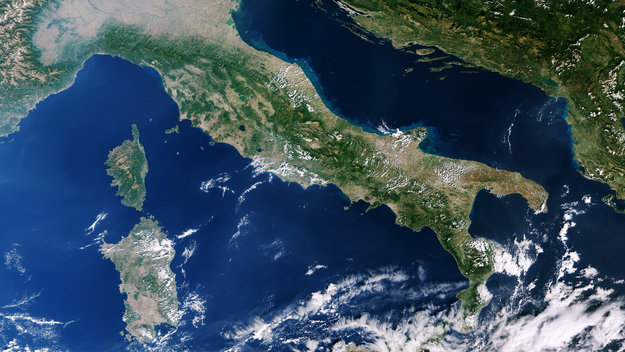
Earth observation image of the week: a Sentinel-3A view stretching from Sardinia to Romania
Earth from Space
9.3.2018 10:05 ESA Observing the Earth
In this edition, the Sentinel-3A satellite treats us to a view over Italy and the Mediterranean
20180309-VŘ Analytik - projektant a Analytik - programátor
9.3.2018 9:14 ČÚZK /Aktuality-resort/2018/20180309-VR-Analytik-projektant-a-Analytik-pro20180309-VŘ Analytik - projektant a Analytik - programátor
9.3.2018 9:14 ČÚZK - předpisy a opatření Český úřad zeměměřický a katastrální zveřejnil novou aktualitu: Oznámení o vyhlášení výběrových řízení na služební místa Analytik/analytička - projektant/projektantka a Analytik/analytička - programátor/programátorka.Analytik/analytička - projektant/projektantka
9.3.2018 8:47 ČÚZK - volná místa Český úřad zeměměřický a katastrální vypisuje výběrové řízení na místo Analytik/analytička - projektant/projektantkaAnalytik/analytička - projektant/projektantka
9.3.2018 8:47 ČÚZK /Urady/Cesky-urad-zememericky-a-katastralni/Uredni-deska/Oznameni-a-jina-uredni-sdeleni/Volna-mista/Analytik-analyticka-projektant-projektantkaAnalytik/analytička - projektant/projektantka
9.3.2018 8:47 ČÚZK - předpisy a opatření Český úřad zeměměřický a katastrálnívypisuje výběrové řízení na místo
Analytik/analytička - projektant/projektantka
6. aktualizace ZÚR Jčk
9.3.2018 8:00 Jihočeský kraj Dne 9. března 2018 nabyla účinnosti 6. aktualizace Zásad územního rozvoje Jihočeského kraje. Dokumentace je k dispozici v sekci Územní plánování -> Zásady Jihočeského kraje.Uzavření úřadu
9.3.2018 7:10 ČÚZK - předpisy a opatření Katastrální úřad pro Pardubický kraj - Katastrální pracoviště Chrudim zveřejnil novou aktualitu: VÁŽENÍ KLIENTI,Z TECHNICKÝCH DŮVODŮ BUDE VE ČTVRTEK 22. 3. 2018 BUDOVA KATASTRÁLNÍHO PRACOVIŠTĚ CHRUDIM MIMO PROVOZ.
Uzavření úřadu
9.3.2018 7:10 ČÚZK - předpisy a opatření Český úřad zeměměřický a katastrální zveřejnil novou aktualitu: VÁŽENÍ KLIENTI,Z TECHNICKÝCH DŮVODŮ BUDE VE ČTVRTEK 22. 3. 2018 BUDOVA KATASTRÁLNÍHO PRACOVIŠTĚ CHRUDIM MIMO PROVOZ.
Uzavření úřadu
9.3.2018 7:10 ČÚZK /Urady/Katastralni-urady/Katastralni-urady/Katastralni-urad-pro-Pardubicky-kraj/Katastralni-pracoviste/KP-Chrudim/O-uradu/Aktuality/Uzavreni-uraduINSPIRE prohlížecí služba pro téma Využití území - kraj Středočeský
9.3.2018 1:00 Cenia - Katalog metadat ČR - INSPIRE INSPIRE prohlížecí služba pro téma Využití území - kraj StředočeskýQuinn-essential tool tips
9.3.2018 0:00 Carlson Software As I write this blog, the Northeast, where I live, is being clobbered by another winter storm. This one named Quinn (above pun well intended). This year I have seen an increase in people and firms looking for training. That is a good sign to me. It means people are using the software and are […]Android P s podporou pro navigaci v budovách
8.3.2018 22:37 Blogující geomatici - FAV ZČUU.S. Army Selects Leidos to Continue Geospatial Intelligence Support with $200 Million Contract
8.3.2018 22:06 GISCafe.com Webcasts-Webinars RESTON, Va., March 7, 2018 — (PRNewswire) — Leidos (NYSE: LDOS), a FORTUNE 500® science, information technology, and …Irish City of the Future Uses Bluesky Aerial Data to Inform Development Plans
8.3.2018 22:05 GISCafe.com Webcasts-Webinars Limerick City and County Council is using the latest aerial photography and 3D height data from Bluesky to improve the planning and delivery of …Microsoft and Esri launch Geospatial AI on Azure (ESRI)
8.3.2018 19:45 GISCafe.com Webcasts-WebinarsFirst DroneSentinel(TM) Order - DroneShield Establishes a European Hub
8.3.2018 19:45 GISCafe.com Webcasts-Webinars - DroneShield receives the first order for DroneSentinel™, its multi-method drone detection system.SYDNEY, March 8, 2018 — (PRNewswire) …
Trimble Launches Trimble Foundation
8.3.2018 19:44 GISCafe.com Webcasts-Webinars In Conjunction with International Women's Day, Trimble Foundation Partners with Camfed to Support the Advancement of Females in AfricaSUNNYVALE, …
Global Commercial UAS Market 2018 Forecast to 2022: Drone Euphoria is Wearing Off and Steady, but Significant, Growth Will Set in - ResearchAndMarkets.com
8.3.2018 19:43 GISCafe.com Webcasts-Webinars DUBLIN — (BUSINESS WIRE) — March 8, 2018 — The "Global Commercial UAS Market, Forecast to 2022" report has been added to …Garmin® introduces the tactix® Charlie, a specialized tactical GPS watch with wrist-based heart rate
8.3.2018 19:43 GISCafe.com Webcasts-Webinars OLATHE, Kan. — (BUSINESS WIRE) — March 8, 2018 — Garmin International, Inc., a unit of Garmin Ltd. (NASDAQ: GRMN), today announced …Kaazing and Pacific Disaster Center Partner to Make leading DisasterAWARE™ Technology Available to Businesses Worldwide
8.3.2018 19:43 GISCafe.com Webcasts-Webinars Kaazing and Pacific Disaster Center announce a strategic partnership to provide businesses with the same powerful technology used exclusively by top …Spire Global and Airbus Partner to Deliver Global Aircraft Surveillance Data
8.3.2018 19:41 GISCafe.com Webcasts-Webinars MADRID, Spain, March 08, 2018 (GLOBE NEWSWIRE) -- Spire Global and Airbus Defence and Space have signed a Memorandum of Understanding. Under the MoU, …Evropská INSPIRE konference
8.3.2018 16:39 CENIA - národní geoportál INSPIRE Evropská INSPIRE konferenceBentley YII 2017 honors winners of Be Inspired Awards
8.3.2018 15:59 Bentley SystemsPress Coverage
World Water, UK
Read the articleReality Modeling Drives Efficient Design, Management of Anderson Road Quarry
8.3.2018 15:35 Bentley SystemsPress Coverage
Lidar News, USA
Read the articleKřest knihy "Češi znovu dobývají vesmír"
8.3.2018 15:29 Český Kosmický PortálV úterý 6. března 2018 proběhl slavnostní křest knihy Kamila Mikety „Češi znovu dobývají vesmír“, vydavatelství Mladá fronta. Kniha shrnuje 21 příběhů českých stop ve vesmíru - a to jak z historie, tak i současnosti, kdy je české „dobývání vesmíru“ spojené především s členstvím v Evropské kosmické agentuře ESA. Proto je generálním partnerem knihy právě Ministerstvo dopravy, které za zastoupení ČR v ESA odpovídá. Na knize se však podíleli i další partneři, jako je CzechInvest, Akademie věd ČR a o svých příbězích promluvili také zástupci některých českých firmem, které na kosmických technologiích pracují!
Odborný referent – budování podrobných bodových polí v oddělení obnovy katastrálního operátu
8.3.2018 15:22 ČÚZK /Urady/Katastralni-urady/Katastralni-urady/Katastralni-urad-pro-Zlinsky-kraj/Uredni-deska/Oznameni-a-jina-uredni-sdeleni/Volna-mista/Odborny-referent-–-budovani-podrobnych-bodovych-poOdborný referent – budování podrobných bodových polí v oddělení obnovy katastrálního operátu
8.3.2018 15:22 ČÚZK - volná místa Katastrální úřad pro Zlínský kraj vypisuje výběrové řízení na místo Odborný referent – budování podrobných bodových polí v oddělení obnovy katastrálního operátuOdborný referent – budování podrobných bodových polí v oddělení obnovy katastrálního operátu
8.3.2018 15:22 ČÚZK - předpisy a opatření Katastrální úřad pro Zlínský krajvypisuje výběrové řízení na místo Odborný referent – budování podrobných bodových polí v oddělení obnovy katastrálního operátu
Odborný referent – budování podrobných bodových polí v oddělení obnovy katastrálního operátu
Waldo Tobler (1930 – 2018)
8.3.2018 13:57 GISportal.cz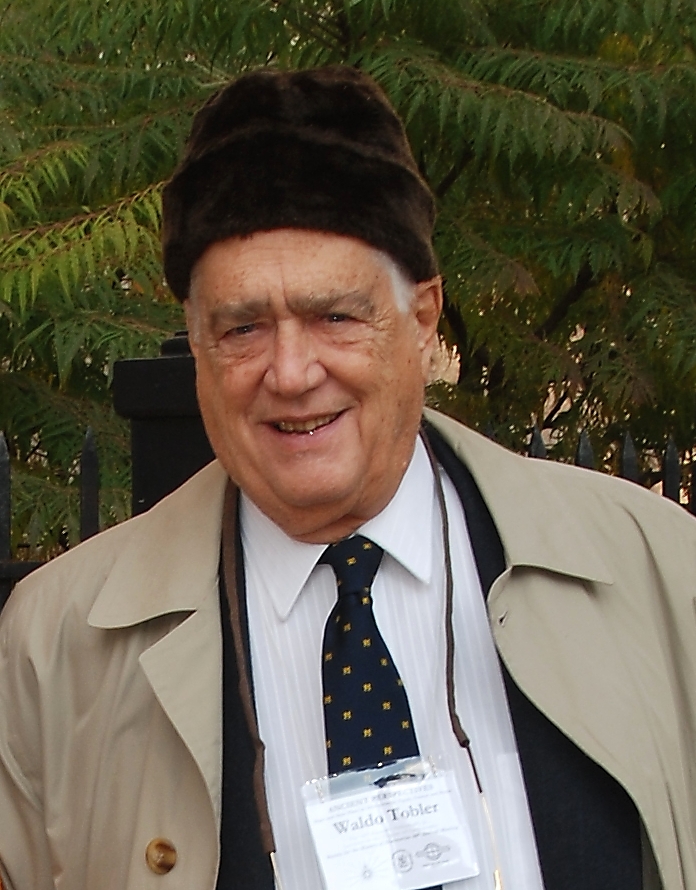
Dnes, dne 8.3. 2018 se koná kalifornské Santa Barbaře pohřeb profesora Waldo Toblera, známého především jako autora prvního zákonu geografie: “everything is related to everything else, but near things are more related than distant things.”.
The post Waldo Tobler (1930 – 2018) appeared first on GISportal.cz.
Výběrové řízení ZKI v Praze
8.3.2018 13:03 ČÚZK - předpisy a opatření Zeměměřický a katastrální inspektorát v Praze zveřejnil novou aktualitu: Oznámení o vyhlášení výběrových řízení na služební místo Inspektor(ka) - právník.Výběrové řízení ZKI v Praze
8.3.2018 13:03 ČÚZK /Urady/Zememericke-a-katastralni-inspektoraty/Zememericke-a-katastralni-inspektoraty/Zememericky-a-katastralni-inspektorat-v-Praze/O-uradu/Aktuality/Vyberove-rizeni-ZKI-v-PrazeInspektor/ka - právník ZKI v Praze
8.3.2018 13:00 ČÚZK - volná místa Zeměměřický a katastrální inspektorát v Praze vypisuje výběrové řízení na místo Inspektor/ka - právník ZKI v PrazeInspektor/ka - právník ZKI v Praze
8.3.2018 13:00 ČÚZK - předpisy a opatření Zeměměřický a katastrální inspektorát v Prazevypisuje výběrové řízení na místo
Inspektor/ka - právník ZKI v Praze
Inspektor/ka - právník ZKI v Praze
8.3.2018 13:00 ČÚZK /Urady/Zememericke-a-katastralni-inspektoraty/Zememericke-a-katastralni-inspektoraty/Zememericky-a-katastralni-inspektorat-v-Praze/Uredni-deska/Oznameni-a-jina-uredni-sdeleni/Volna-mista/Inspektor-ka-pravnik-ZKI-v-PrazeCelková rekonstrukce budovy v Karlových Varech
8.3.2018 12:48 ČÚZK /Urady/Katastralni-urady/Katastralni-urady/Katastralni-urad-pro-Karlovarsky-kraj/Katastralni-pracoviste/KP-Karlovy-Vary/O-uradu/Aktuality/Celkova-rekonstrukce-budovy-v-Karlovych-VarechCelková rekonstrukce budovy v Karlových Varech
8.3.2018 12:48 ČÚZK - předpisy a opatření Katastrální úřad pro Karlovarský kraj - Katastrální pracoviště Karlovy Vary zveřejnil novou aktualitu:Od 1.3.2018 do 30.9.2018 projde budova Katastrálního úřadu pro Karlovarský kraj a Katastrálního pracoviště Karlovy Vary celkovou rekonstrukcí.
Rekonstrukce probíhá za plného provozu a bez omezení úředních hodin. Po dobu prací bude uzavřeno parkoviště pro klienty. Děkujeme za pochopení.
Celková rekonstrukce budovy v Karlových Varech
8.3.2018 12:44 ČÚZK - předpisy a opatření Katastrální úřad pro Karlovarský kraj zveřejnil novou aktualitu:Od 1.3.2018 do 30.9.2018 projde budova Katastrálního úřadu pro Karlovarský kraj a Katastrálního pracoviště Karlovy Vary celkovou rekonstrukcí.
Rekonstrukce probíhá za plného provozu a bez omezení úředních hodin. Po dobu prací bude uzavřeno parkoviště pro klienty. Děkujeme za pochopení.
Celková rekonstrukce budovy v Karlových Varech
8.3.2018 12:44 ČÚZK /Urady/Katastralni-urady/Katastralni-urady/Katastralni-urad-pro-Karlovarsky-kraj/O-uradu/Aktuality/Celkova-rekonstrukce-budovy-v-Karlovych-VarechEarth from Space
8.3.2018 11:25 ESA Observing the Earth
ESA's Bruno Berruti joins us in the cleanroom to give us an up-close look at the multiple instruments on the Copernicus Sentinel-3B satellite
OGC publishes Testbed 13 Engineering Reports
8.3.2018 10:14 GISCafe.com Webcasts-Webinars Engineering Reports document the outcomes of Testbed 13, including new interoperability prototypes and potential OGC standards.Mar 07, 2017 …
USGIF Extends Partnership with DigitalGlobe Foundation
8.3.2018 10:02 GISCafe.com Webcasts-Webinars USGIF’s 14 accredited collegiate programs granted DigitalGlobe imagery accessHerndon, Virginia (March 7, 2018)— The United States …
Vrchní referent/rada v oddělení právních vztahů
8.3.2018 9:14 ČÚZK - volná místa Katastrální úřad pro Liberecký kraj - Katastrální pracoviště Jablonec nad Nisou vypisuje výběrové řízení na místo Vrchní referent/rada v oddělení právních vztahůVrchní referent/rada v oddělení právních vztahů
8.3.2018 9:14 ČÚZK - předpisy a opatření Katastrální úřad pro Liberecký kraj - Katastrální pracoviště Jablonec nad Nisouvypisuje výběrové řízení na místo
Vrchní referent/rada v oddělení právních vztahů
Revize KN
8.3.2018 7:24 ČÚZK /Urady/Katastralni-urady/Katastralni-urady/Katastralni-urad-pro-Ustecky-kraj/Katastralni-pracoviste/KP-Teplice/O-uradu/Aktuality/Revize-KN-(2)Revize KN
8.3.2018 7:24 ČÚZK - předpisy a opatření Katastrální úřad pro Ústecký kraj - Katastrální pracoviště Teplice zveřejnil novou aktualitu: Vážení klienti, oznamujeme Vám, že od 31.3.2018 - do 31.3.2019 bude probíhat v katastrálním území Újezdeček obce Újezdeček revize katastru nemovitostí. Účelem provádění revize je soulad údajů katastru nemovitostí se skutečným stavem v terénu, kdy jsou zjišťovány změny a ověřován dosavadní stav předmětu evidence katastru nemovitostí.Revize KN
8.3.2018 7:23 ČÚZK - předpisy a opatření Katastrální úřad pro Ústecký kraj - Katastrální pracoviště Teplice zveřejnil novou aktualitu: Vážení klienti, oznamujeme Vám, že od 12.3.2018 - do 30.11.2018 bude probíhat v katastrálním území Habartice u Krupky obce Krupka revize katastru nemovitostí. Účelem provádění revize je soulad údajů katastru nemovitostí se skutečným stavem v terénu, kdy jsou zjišťovány změny a ověřován dosavadní stav předmětu evidence katastru nemovitostí.Revize KN
8.3.2018 7:23 ČÚZK /Urady/Katastralni-urady/Katastralni-urady/Katastralni-urad-pro-Ustecky-kraj/Katastralni-pracoviste/KP-Teplice/O-uradu/Aktuality/Revize-KN-(1)Revize KN
8.3.2018 7:23 ČÚZK - předpisy a opatření Katastrální úřad pro Ústecký kraj - Katastrální pracoviště Teplice zveřejnil novou aktualitu: Vážení klienti, oznamujeme Vám, že od 12.3.2018 - do 30.11.2018 bude probíhat v katastrálním území Habartice u Krupky obce Krupka revize katastru nemovitostí. Účelem provádění revize je soulad údajů katastru nemovitostí se skutečným stavem v terénu, kdy jsou zjišťovány změny a ověřován dosavadní stav předmětu evidence katastru nemovitostí.Revize KN
8.3.2018 7:23 ČÚZK /Urady/Katastralni-urady/Katastralni-urady/Katastralni-urad-pro-Ustecky-kraj/Katastralni-pracoviste/KP-Teplice/O-uradu/Aktuality/Revize-KN-(1)Revize KN
8.3.2018 7:21 ČÚZK - předpisy a opatření Katastrální úřad pro Ústecký kraj - Katastrální pracoviště Teplice zveřejnil novou aktualitu: Vážení klienti, oznamujeme Vám, že od 12.3.2018 - do 30.11.2018 bude probíhat v katastrálním území Hudcov obce Teplice revize katastru nemovitostí. Účelem provádění revize je soulad údajů katastru nemovitostí se skutečným stavem v terénu, kdy jsou zjišťovány změny a ověřován dosavadní stav předmětu evidence katastru nemovitostí.Revize KN
8.3.2018 7:21 ČÚZK /Urady/Katastralni-urady/Katastralni-urady/Katastralni-urad-pro-Ustecky-kraj/Katastralni-pracoviste/KP-Teplice/O-uradu/Aktuality/Revize-KNRevize KN
8.3.2018 7:21 ČÚZK - předpisy a opatření Katastrální úřad pro Ústecký kraj - Katastrální pracoviště Teplice zveřejnil novou aktualitu: Vážení klienti, oznamujeme Vám, že od 12.3.2018 - do 30.11.2018 bude probíhat v katastrálním území Hudcov obce Teplice revize katastru nemovitostí. Účelem provádění revize je soulad údajů katastru nemovitostí se skutečným stavem v terénu, kdy jsou zjišťovány změny a ověřován dosavadní stav předmětu evidence katastru nemovitostí.Revize KN
8.3.2018 7:21 ČÚZK /Urady/Katastralni-urady/Katastralni-urady/Katastralni-urad-pro-Ustecky-kraj/Katastralni-pracoviste/KP-Teplice/O-uradu/Aktuality/Revize-KNPlán obnovy
8.3.2018 7:16 ČÚZK - předpisy a opatření Katastrální úřad pro Ústecký kraj - Katastrální pracoviště Teplice zveřejnil novou aktualitu: Zveřejňujeme plán revizí a obnovy katastrálního operátu novým mapováním v okrese Teplice - dokument ke stažení zde.Plán obnovy
8.3.2018 7:16 ČÚZK /Urady/Katastralni-urady/Katastralni-urady/Katastralni-urad-pro-Ustecky-kraj/Katastralni-pracoviste/KP-Teplice/O-uradu/Aktuality/Plan-obnovyPozvánka na Setkání zákazníků Gefos
8.3.2018 7:00 Česká asociace pro geoinformaceGefos a.s., kolektivní člen CAGI, si Vás dovoluje srdečně pozvat na již XII. ročník setkání zákazníků společnosti, které proběhne dne 26. 4. 2018 v příjemném prostředí Parkhotelu Hluboká nad Vltavou.
Zahájení je plánováno na 9:00, prezence účastníků bude probíhat od 8:30 u hotelové recepce.
Těšit se můžete opět na novinky z oblasti GIS pro obce, systému
Geological Map Lausitz-Jizera-Karkonosze 1: 100 000
8.3.2018 1:00 Cenia - Katalog metadat ČR - INSPIRE Aplikace představuje geologickou mapu území Lužických hor, Jizerských hor a Krkonoš v měřítku 1:100 000 (Eds: O. Krentz, W. Kozdrój and M. Opletal, 2000), na níž jsou znázorněny prekambrické, paleozoické a mezozoické horniny a terciérní vulkanity severního okraje Českého masivu, zasahující do oblasti Německa, Polska a České republiky. CD-ROM představuje důležitý doplněk k již vytištěné mapě a umožňuje interaktivní práci s mapami pomocí nástrojů GIS. Zúčastněné instituce: geologické služby Polska, České republiky a Saska. Aplikace pracuje se statickými daty a je k dispozici pouze na CD-ROM (e-shop).Geological Map Lausitz-Jizera-Karkonosze 1: 100 000
8.3.2018 1:00 Cenia - Katalog metadat ČR - INSPIRE Geologická mapa území Lužických hor, Jizerských hor a Krkonoš v měřítku 1:100 000 (Eds: O. Krentz, W. Kozdrój and M. Opletal, 2000) znázorněňuje prekambrické, paleozoické a mezozoické horniny a terciérní vulkanity severního okraje Českého masivu, zasahující do oblasti Německa, Polska a České republiky. Na tvorbě spolupracovali geologické služby Polska, České republiky a Saska.Meet Jeroen Harbers, Carlson Software’s new Director of GIS
7.3.2018 23:16 Carlson Software First, Jeroen Harbers of Nijverdal, the Netherlands, is getting the Dutch Water Authorities up to speed with using Carlson SurvPC data collection software with Esri® for accuracy in GIS mapping. Then, he’s going to show the world. Two years ago, the Dutch Water Authority where Jeroen (pronounced Yer-roan) worked needed to find new surveying software […]Motorola Solutions Completes Acquisition of Airbus DS Communications
7.3.2018 21:04 GISCafe.com Webcasts-Webinars Acquisition strengthens Motorola Solutions’ command center software portfolioCHICAGO — (BUSINESS WIRE) — March 7, 2018 — …
Quuppa, Nesa Solutions Partner to Deliver Robust Location-based Workflows for Healthcare
7.3.2018 21:03 GISCafe.com Webcasts-Webinars Nesa’s dynamic workflow solutions enabled through Quuppa’s advanced location capabilitiesLAS VEGAS — (BUSINESS WIRE) — …
Rising seas and climate change: Everything you need to know (ESRI)
7.3.2018 18:13 GISCafe.com Webcasts-WebinarsJibestream Introduces Map Profiles Among New Indoor Mapping and Navigation Features
7.3.2018 18:10 GISCafe.com Webcasts-Webinars TORONTO, March 7, 2018 — (PRNewswire) — Jibestream, the premier mapping platform provider, announced today the release of powerful …Accela launches government licensing SaaS applications for cannabis and short-term rentals
7.3.2018 18:10 GISCafe.com Webcasts-Webinars Pre-built, configurable, out-of-the-box solutions provide local and state governments an easy way to adapt to complicated emerging regulatory …WuXi NextCODE Unveils Genomics Partnership with Google Cloud
7.3.2018 18:09 GISCafe.com Webcasts-Webinars - WuXi NextCODE's massively scalable genomics database management system and clinical and research applications will be available to Google Cloud …Boundless to Host Roundtable Webinar on Boundless Server Enterprise
7.3.2018 18:08 GISCafe.com Webcasts-Webinars GIS Experts to Discuss How Boundless Server Enterprise Serves Location Data in The Cloud, Provides Powerful Solution for Availability and …Bentley Issues Call for Submissions to the Year in Infrastructure 2018 Awards for Going Digital: Advancements in Infrastructure
7.3.2018 16:39 Bentley SystemsWinners to be Selected and Announced at the Year in Infrastructure 2018 Conference
in London
EXTON, Pa., U.S.A. – March 7, 2018 – Bentley Systems, Incorporated, a leading global provider of comprehensive software solutions for advancing infrastructure, today announced its call for submissions to the Year in Infrastructure 2018 Awards program. The awards, which are judged by independent juries of industry experts, recognize infrastructure projects for digital innovations that improve project delivery and/or asset performance. The deadline for submissions is April 30, 2018.
The Year in Infrastructure Awards (formerly Be Inspired Awards) are an integral part of Bentley’s annual Year in Infrastructure 2018 Conference, which this year takes place October 15 through 18 in London at the Hilton London Metropole.
Users of Bentley software are invited to enter their projects in the Year in Infrastructure Awards program, no matter which phase the project is in – preconstruction/conceptual, design, construction, or in operations. The three finalists chosen for each awards category win a trip to London to attend the Year in Infrastructure 2018 Conference, as guests of Bentley Systems. The finalists will present their projects as part of the conference before the judges, industry thought leaders, and more than 100 members of the media.
Every project nominated for a Year in Infrastructure Award receives significant and valuable recognition across the global infrastructure community. Through the Year in Infrastructure Awards program, participants:
- gain global recognition by having their infrastructure projects profiled in Bentley’s Infrastructure Yearbook, which is distributed in print and digital formats to nearly 150,000 key media, government, and industry influencers around the world; in addition, all winners’ and finalists’ projects are featured on Bentley’s website
- enhance their competitive edge by demonstrating to existing and potential clients the value they add to projects through their digital innovations
- receive media coverage from global media and support from the Bentley team in marketing and promoting their respective projects to the media.
Matthew Simon, vice president, HNTB said, “Our project being a 2017 winner is a game-changer for HNTB. It shows we are able to take this technology and use it for other projects and other pursuits. It puts HNTB in that trusted advisor position with our clients—to deliver these projects every day.”
The 19 Year in Infrastructure 2018 Awards categories recognize advancements in going digital for the following categories, several of which are new this year:
- Bridges
- Buildings and Campuses
- Communications Networks
- Construction
- Digital Cities
- Environmental Engineering
- Manufacturing
- Mining and Offshore Engineering
- Power Generation
- Project Delivery
- Rail and Transit
- Reality Modeling
- Roads and Highways
- Road and Rail Asset Performance
- Structural Engineering
- Utilities and Industrial Asset Performance
- Utilities Transmission and Distribution
- Water and Wastewater Treatment Plants
- Water, Wastewater, and Stormwater Networks
The theme of the Year in Infrastructure 2018 Conference is Going Digital: Advancements in Infrastructure. Presented by Bentley Institute, the conference features keynotes by leading industry experts, interactive workshops, panel discussions, product demonstrations, and six industry-specific forums:
- Buildings and Campuses
- Digital Cities
- Industrial Infrastructure
- Rail and Transit
- Roads and Bridges
- Utilities and Water
For additional information about the Year in Infrastructure Awards program, or to nominate a project, visit the Year in Infrastructure Awards website.
Watch a one-minute video about the nomination process
About Bentley Systems’ Year in Infrastructure Conference
Presented by Bentley Institute, the Year in Infrastructure Conference is a global gathering of leading executives in the world of infrastructure design, construction, and operations. The conference is globally recognized as the leading forum for addressing the current priorities and opportunities impacting the infrastructure industry. Attendees hear from industry thought leaders, engage in forums and discussions, and learn about technologies and best practices that will shape the future of infrastructure delivery and operations.
About Bentley Systems
Bentley Systems is a global leader in providing architects, engineers, geospatial professionals, constructors, and owner-operators with comprehensive software solutions for advancing the design, construction, and operations of infrastructure. Bentley users leverage information mobility across disciplines and throughout the infrastructure lifecycle to deliver better-performing projects and assets. Bentley solutions encompass MicroStation applications for information modeling, ProjectWise collaboration services to deliver integrated projects, and AssetWise operations services to achieve intelligent infrastructure – complemented by worldwide professional services and comprehensive managed services.
Founded in 1984, Bentley has more than 3,000 colleagues in over 50 countries, more than $600 million in annual revenues, and since 2011 has invested more than $1 billion in research, development, and acquisitions.
Additional information about Bentley is available at www.bentley.com. For Bentley news as it happens, subscribe to an RSS feed of Bentley press releases and news alerts. Visit the Year in Infrastructure Conference website for information about Bentley’s premier thought-leadership event. To view a searchable collection of innovative infrastructure projects from the annual Year in Infrastructure Awards, access Bentley’s Infrastructure Yearbooks. To access a professional networking site that enables members of the infrastructure community to connect, communicate, and learn from each other, visit Bentley Communities.
To download the Bentley Infrastructure 500 Top Owners ranking, a unique global compendium of the top public- and private-sector owners of infrastructure based on the value of their cumulative infrastructure investments, visit BI 500.
# # #
Bentley, the “B” Bentley logo, AssetWise, MicroStation, and ProjectWise are either registered or unregistered trademarks or service marks of Bentley Systems, Incorporated or one of its direct or indirect wholly owned subsidiaries. All other brands and product names are trademarks of their respective owners.
Bentley Systems Issues Call for Submissions to the Year in Infrastructure 2018 Awards for Going Digital: Advancements in Infrastructure
7.3.2018 16:39 Bentley SystemsWinners to be Selected and Announced at the Year in Infrastructure 2018 Conference
in London
EXTON, Pa., U.S.A. – March 7, 2018 – Bentley Systems, Incorporated, a leading global provider of comprehensive software solutions for advancing infrastructure, today announced its call for submissions to the Year in Infrastructure 2018 Awards program. The awards, which are judged by independent juries of industry experts, recognize infrastructure projects for digital innovations that improve project delivery and/or asset performance. The deadline for submissions is April 30, 2018.
The Year in Infrastructure Awards (formerly Be Inspired Awards) are an integral part of Bentley’s annual Year in Infrastructure 2018 Conference, which this year takes place October 15 through 18 in London at the Hilton London Metropole.
Users of Bentley software are invited to enter their projects in the Year in Infrastructure Awards program, no matter which phase the project is in – preconstruction/conceptual, design, construction, or in operations. The three finalists chosen for each awards category win a trip to London to attend the Year in Infrastructure 2018 Conference, as guests of Bentley Systems. The finalists will present their projects as part of the conference before the judges, industry thought leaders, and more than 100 members of the media.
Every project nominated for a Year in Infrastructure Award receives significant and valuable recognition across the global infrastructure community. Through the Year in Infrastructure Awards program, participants:
- gain global recognition by having their infrastructure projects profiled in Bentley’s Infrastructure Yearbook, which is distributed in print and digital formats to nearly 150,000 key media, government, and industry influencers around the world; in addition, all winners’ and finalists’ projects are featured on Bentley’s website
- enhance their competitive edge by demonstrating to existing and potential clients the value they add to projects through their digital innovations
- receive media coverage from global media and support from the Bentley team in marketing and promoting their respective projects to the media.
Matthew Simon, vice president, HNTB said, “Our project being a 2017 winner is a game-changer for HNTB. It shows we are able to take this technology and use it for other projects and other pursuits. It puts HNTB in that trusted advisor position with our clients—to deliver these projects every day.”
The 19 Year in Infrastructure 2018 Awards categories recognize advancements in going digital for the following categories, several of which are new this year:
- Bridges
- Buildings and Campuses
- Communications Networks
- Construction
- Digital Cities
- Environmental Engineering
- Manufacturing
- Mining and Offshore Engineering
- Power Generation
- Project Delivery
- Rail and Transit
- Reality Modeling
- Roads and Highways
- Road and Rail Asset Performance
- Structural Engineering
- Utilities and Industrial Asset Performance
- Utilities Transmission and Distribution
- Water and Wastewater Treatment Plants
- Water, Wastewater, and Stormwater Networks
The theme of the Year in Infrastructure 2018 Conference is Going Digital: Advancements in Infrastructure. Presented by Bentley Institute, the conference features keynotes by leading industry experts, interactive workshops, panel discussions, product demonstrations, and six industry-specific forums:
- Buildings and Campuses
- Digital Cities
- Industrial Infrastructure
- Rail and Transit
- Roads and Bridges
- Utilities and Water
For additional information about the Year in Infrastructure Awards program, or to nominate a project, visit the Year in Infrastructure Awards website.
Watch a one-minute video about the nomination process
About Bentley Systems’ Year in Infrastructure Conference
Presented by Bentley Institute, the Year in Infrastructure Conference is a global gathering of leading executives in the world of infrastructure design, construction, and operations. The conference is globally recognized as the leading forum for addressing the current priorities and opportunities impacting the infrastructure industry. Attendees hear from industry thought leaders, engage in forums and discussions, and learn about technologies and best practices that will shape the future of infrastructure delivery and operations.
About Bentley Systems
Bentley Systems is a global leader in providing architects, engineers, geospatial professionals, constructors, and owner-operators with comprehensive software solutions for advancing the design, construction, and operations of infrastructure. Bentley users leverage information mobility across disciplines and throughout the infrastructure lifecycle to deliver better-performing projects and assets. Bentley solutions encompass MicroStation applications for information modeling, ProjectWise collaboration services to deliver integrated projects, and AssetWise operations services to achieve intelligent infrastructure – complemented by worldwide professional services and comprehensive managed services.
Founded in 1984, Bentley has more than 3,000 colleagues in over 50 countries, more than $600 million in annual revenues, and since 2011 has invested more than $1 billion in research, development, and acquisitions.
Additional information about Bentley is available at www.bentley.com. For Bentley news as it happens, subscribe to an RSS feed of Bentley press releases and news alerts. Visit the Year in Infrastructure Conference website for information about Bentley’s premier thought-leadership event. To view a searchable collection of innovative infrastructure projects from the annual Year in Infrastructure Awards, access Bentley’s Infrastructure Yearbooks. To access a professional networking site that enables members of the infrastructure community to connect, communicate, and learn from each other, visit Bentley Communities.
To download the Bentley Infrastructure 500 Top Owners ranking, a unique global compendium of the top public- and private-sector owners of infrastructure based on the value of their cumulative infrastructure investments, visit BI 500.
# # #
Bentley, the “B” Bentley logo, AssetWise, MicroStation, and ProjectWise are either registered or unregistered trademarks or service marks of Bentley Systems, Incorporated or one of its direct or indirect wholly owned subsidiaries. All other brands and product names are trademarks of their respective owners.
Infrared for PdM, upgraded
7.3.2018 15:38 Bentley SystemsPress Coverage
Plant Services, USA
Read the articleMore oil producers moving toward a risk-based approach for asset life extension
7.3.2018 15:32 Bentley SystemsPress Coverage
Pipeline Oil & Gas Magazine, Middle East
Read the articleLACCD Sets BIM Standard on Largest Bond Construction Program in the U.S.
7.3.2018 15:28 Bentley SystemsPress Coverage
Cadalyst, USA
Read the articleAnalytical-physical modeling and interoperability propel BIM
7.3.2018 15:12 Bentley SystemsPress Coverage
EE Publishers, Sub-Sahara Africa
Read the articleNew Centre for Digital Built Britain at the University of Cambridge
7.3.2018 15:01 Bentley SystemsPress Coverage
Raconteur, UK
Read the articleChcete vyjet na stáž do zahraničí? Vidzeme University of Applied Sciences v Lotyšsku má pro Vás nabídku
7.3.2018 13:50 Blogující geomatici - FAV ZČU Popis nabídky Vidzeme University of Applied Sciences v Lotyšsku je uveden níže. Pokud Vás nabídka zaujme, kontaktujte mne pro další informace.Application procedure and possibilities for exchange students at Vidzeme University
of Applied Sciences in the academic year 2018/2019.
Application procedure:
First we expect an official student nomination from university by
e-mail (international@va.lv). Then we will send a specific application
information directly to nominated students. The deadline for exchange
student applications is May 1 (autumn semester/academic year) and
October 15 (spring semester). More information is available here:
http://va.lv/en/study-here/exc
After nomination students are required to fill in the application form,
add photo, transcript of records and their learning agreements. All
courses for autumn semester 2018 within our International Study Module
are available here:
http://va.lv/en/study-here/exc
.
We would like to take this opportunity and inform you that we have
developed a new website and all relevant information about our
university is available here: http://va.lv/en . Development of homepage
is still in progress so if you have any questions do not hesitate to
contact us. Also please find enclosed our fact-sheet with all the
current information and active links.
Scholarships:
We would also like to inform you about the Latvian Government
scholarships available for full time international students and
researchers of certain countries for study or research periods in
Latvia. Please see further information here:
http://viaa.gov.lv/eng/scholar
We have one full degree master programme in English - Business
Environment Administration at the moment and four more new programmes
will be launched starting from September - Cybersecurity Engineering,
Virtual reality and mobile technologies, Media and digital literacy,
Strategic communication. More information here:
http://va.lv/en/study-here/mas
Thank you for all your work to make our cooperation successful !
We look forward to see your students and teachers in Vidzeme and
Valmiera.
Kind regards,
ViA International Office
--
ViA Starptautiskās sadarbības grupa / ViA International Office
Vidzemes Augstskola / Vidzeme University of Applied Sciences
Cēsu iela 4, Valmiera, LV-4201, Latvija
Tālr. +371 64250853, +371 22042022
www.va.lv
Vyplňujete rádi netradiční dotazníky? Nyní máte příležitost!
7.3.2018 13:32 Blogující geomatici - FAV ZČU Na stránce http://3dmapa.kgm.zcu.cz/ je do neděle 11. 3. 2018 do 12.00 přístupný online dotazník obsahující experimenty zkoumající kartografické přístupy pro virtuální 2D a 3D mapy.Je součástí mé dizertační práce a i Vaše výsledky přispějí k jejímu dokončení.
Máte-li chuť ho vyplnit a zažít online dotazníky z trochu jiného úhlu pohledu, neváhejte a směle se pusťte do toho :-)...
20180307-prehledy o pudnim fondu
7.3.2018 13:11 ČÚZK /Aktuality-resort/2018/20180307-prehledy-o-pudnim-fondu20180307-prehledy o pudnim fondu
7.3.2018 13:11 ČÚZK - předpisy a opatření Český úřad zeměměřický a katastrální zveřejnil novou aktualitu: Zveřejněna publikace "Souhrnné přehledy o půdním fondu z údajů katastru nemovitostí České republiky 2018".Co se děje ve světě Esri?
7.3.2018 12:52 ARCDATAVyužití GIS během tropických bouří a při odstraňování jejich následků, nasazení GIS v rozšířené realitě, ve facility managementu, při správě silnic či při prevenci dopravních nehod – to jsou jen některá témata článků z nových čísel časopisů ArcUser a ArcNews. Přečíst si ale můžete i o animovaných symbolech ve webových mapách, dozvíte se, jak si vyzkoušet práci se snímky z dronů, a prohlédnete si třeba i aplikaci pro sdílení uběhnutých tras ve 3D.
Podívejte se na výběr článků z ArcUser a ArcNews, který jsme pro vás připravili. Oba časopisy si také můžete stáhnout ve formátu PDF (ArcNews, ArcUser).
První zážeh elektrického motoru pracujícího se vzduchem
7.3.2018 12:41 Český Kosmický PortálTým pod vedením ESA jako první na světě postavil a odzkoušel elektrický motor, který využívá molekuly z velmi řídké atmosféry jako „palivo“. Tím se otevírá možnost pro dlouhodobý pobyt družic na velmi nízkých oběžných drahách.
První zážeh elektrického motoru pracujícího se vzduchem
7.3.2018 12:41 Český Kosmický PortálTým pod vedením ESA jako první na světě postavil a odzkoušel elektrický motor, který využívá molekuly z velmi řídké atmosféry jako „palivo“. Tím se otevírá možnost pro dlouhodobý pobyt družic na velmi nízkých oběžných drahách.
Mapová aplikace ÚPD - nové dokumentace
7.3.2018 10:30 Jihočeský kraj V mapové aplikaci Územně plánovací dokumentace obcí byla aktualizována územně plánovací dokumentace obcí Bechyně, České Budějovice, Přední Výtoň a Vyšší Brod.Rada/odborný rada v oddělení podpory informačních a komunikačních technologií v technické sekci na K
7.3.2018 9:49 ČÚZK /Urady/Katastralni-urady/Katastralni-urady/Katastralni-urad-pro-Jihomoravsky-kraj/Uredni-deska/Oznameni-a-jina-uredni-sdeleni/Volna-mista/Rada-odborny-rada-v-oddeleni-podpory-informacn-(2)Rada/odborný rada v oddělení podpory informačních a komunikačních technologií v technické sekci na K
7.3.2018 9:49 ČÚZK - volná místa Katastrální úřad pro Jihomoravský kraj - technická sekce vypisuje výběrové řízení na místo Rada/odborný rada v oddělení podpory informačních a komunikačních technologií v technické sekci na KRada/odborný rada v oddělení podpory informačních a komunikačních technologií v technické sekci na K
7.3.2018 9:49 ČÚZK - předpisy a opatření Katastrální úřad pro Jihomoravský kraj - technická sekcevypisuje výběrové řízení na místo
Rada/odborný rada v oddělení podpory informačních a komunikačních technologií v technické sekci na Katastrálním úřadu pro Jihomoravský kraj
OGC joins ApacheCon as Community Partner and Geospatial Track lead
7.3.2018 9:43 GISCafe.com Webcasts-Webinars Call for papers for presentations concerning Apache projects that include geospatial data and processing closes 30th MarchMar 06, 2018 …
Chystá se změna firemní struktury TKP Czech Republic a Gefosu
7.3.2018 8:34 GISportal.cz
Podle informací dohledatelných ve Veřejném rejstříku a Sbírce listin se společnost Gefos a.s. štěpí (konkrétně “Oblast Jih”), která přechází pod společnost TKP Czech Republic s.r.o, kterou ale 100% vlastní společnost Gefos a.s.. Nově vzniklá firma ponese název TKP geo s.r.o.. V současné době se Gefos řadí mezi největší firmy ve svém oboru v České republice, co do počtu zaměstnanců […]
The post Chystá se změna firemní struktury TKP Czech Republic a Gefosu appeared first on GISportal.cz.



